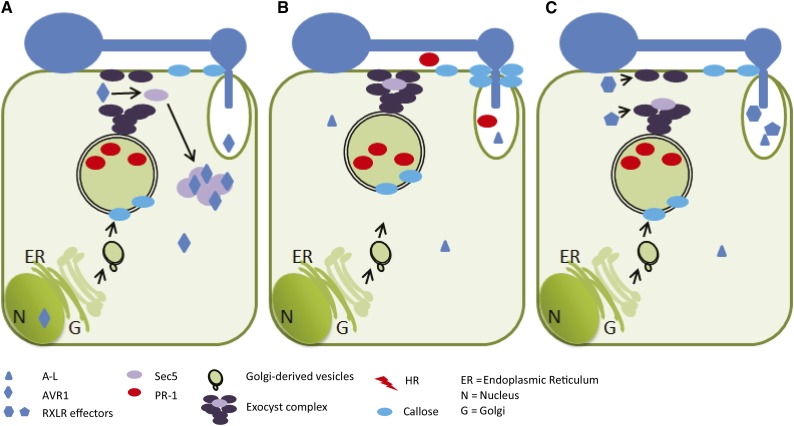Figure 9.
The P. infestans RXLR effector AVR1 and its host target Sec5. The models depict the interaction between AVR1 and Sec5 in plant cells colonized by P. infestans. Germ tubes emerging from cysts form an appressorium. After penetration, a haustorium is formed from which RXLR effectors are translocated into the host cell. A, In response to pathogen invasion, the host cell secretes antimicrobial compounds (including the pathogenesis-related protein PR-1) and deposits callose at the site of penetration to hamper infection (as depicted in B). However, when AVR1 is secreted by P. infestans and is translocated from the haustorium into the host cell, it targets and stabilizes Sec5 in the cytoplasm. The exocyst complex is thus out of balance and not able to mediate the focal secretion of PR-1 and callose. B, When P. infestans secretes A-L instead of AVR1, there is no stabilization of Sec5 by AVR1. Since colonization is not blocked, P. infestans can withstand the inhibitory activity of PR-1 or overcome the barrier caused by callose deposition or, as shown in C, it secretes other RXLR effectors that target the exocyst and/or vesicle-trafficking machinery to hamper the focal secretion.

